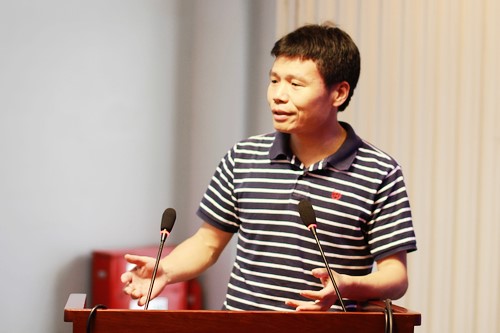|

|
Prof. Jun-Hua Yuan (袁军华 教授)
Department of Physics,
University of Science and Technology of China
Email: jhyuan@ustc.edu.cn |
Abstract: Motility offers bacteria survival benefits, and is important for bacterial pathogenicity. Many swim by rotating thin helical filaments, each driven at its base by a reversible rotary motor, powered by an ion flux. Studies of the physiology of the bacterial flagellar rotary motor have been limited to the regime of relatively high load due to technical limitations. We have developed a novel nanogold laser–darkfield technique and have systematically studied the motor behavior near zero loads. I will discuss three of these studies: motor resurrection at zero loads, motor switching under various loads, and its torque–speed curves for clockwise and counterclockwise rotations. These studies provide insights into the motor torque–generating and switching mechanism.
The flagellar motor is a part of the chemotaxis signaling network, which consists of two large multiprotein complexes: inputs are detected by receptors and associated proteins clustered primarily at one cell pole, while flagellar motors dispersed on the cell membrane generate the system’s output. How might the receptor output and motor input be matched? Here we show that the motor shifts its operating range to match the receptor output by changing its composition. The number of FliM subunits in the motor C-ring increases in response to a decrement in the concentration of CheY-P, increasing motor sensitivity. Such adaptive remodeling is likely to be a common feature in the operation of many molecular machines.
Date&Time: July 24, 2013 (Wednesday), 10:30 - 11:30 a.m.
Location: 606 Conference Room 

